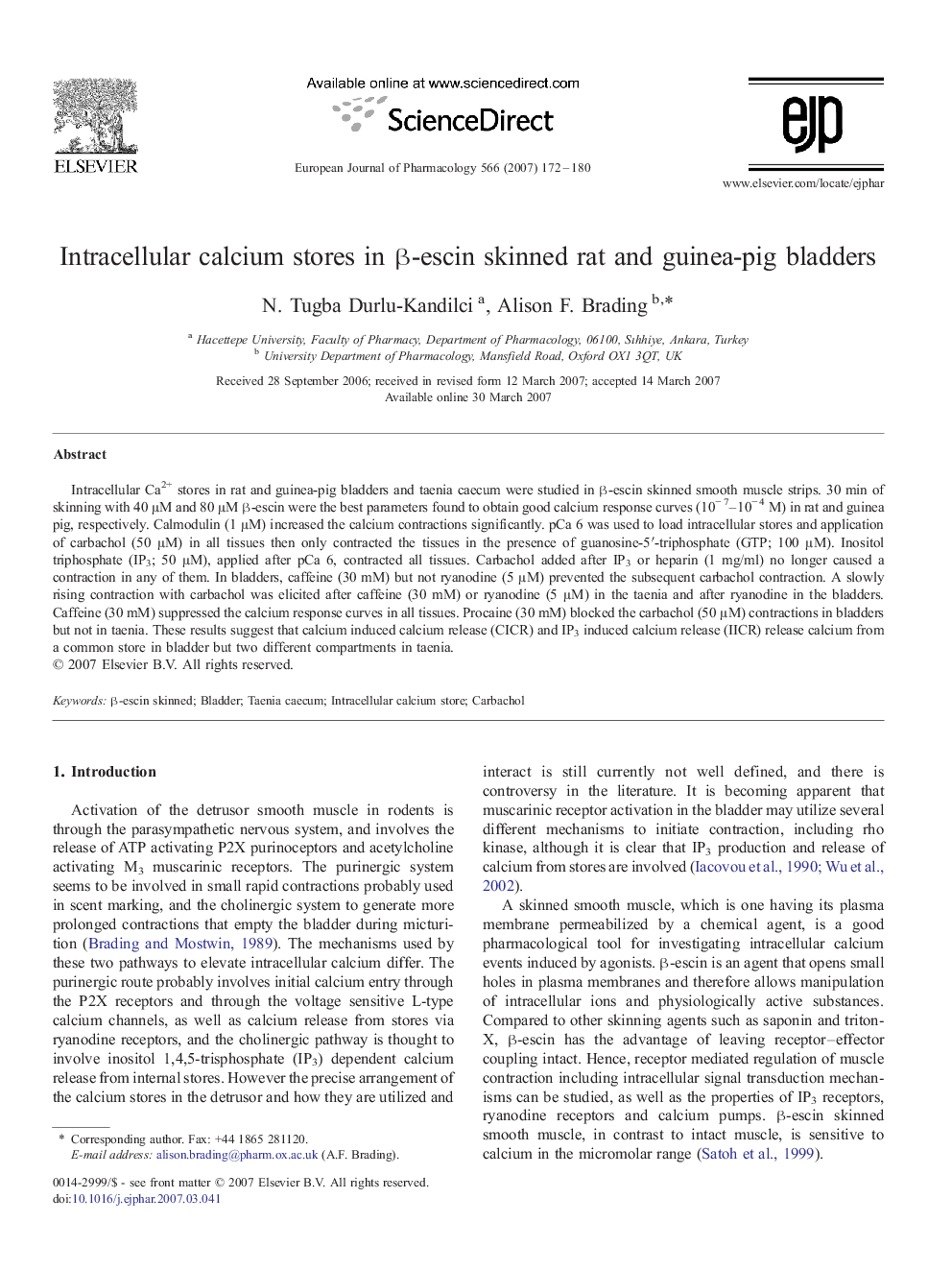| Article ID | Journal | Published Year | Pages | File Type |
|---|---|---|---|---|
| 2536052 | European Journal of Pharmacology | 2007 | 9 Pages |
Intracellular Ca2+ stores in rat and guinea-pig bladders and taenia caecum were studied in β-escin skinned smooth muscle strips. 30 min of skinning with 40 μM and 80 μM β-escin were the best parameters found to obtain good calcium response curves (10− 7–10− 4 M) in rat and guinea pig, respectively. Calmodulin (1 μM) increased the calcium contractions significantly. pCa 6 was used to load intracellular stores and application of carbachol (50 μM) in all tissues then only contracted the tissues in the presence of guanosine-5′-triphosphate (GTP; 100 μM). Inositol triphosphate (IP3; 50 μM), applied after pCa 6, contracted all tissues. Carbachol added after IP3 or heparin (1 mg/ml) no longer caused a contraction in any of them. In bladders, caffeine (30 mM) but not ryanodine (5 μM) prevented the subsequent carbachol contraction. A slowly rising contraction with carbachol was elicited after caffeine (30 mM) or ryanodine (5 μM) in the taenia and after ryanodine in the bladders. Caffeine (30 mM) suppressed the calcium response curves in all tissues. Procaine (30 mM) blocked the carbachol (50 μM) contractions in bladders but not in taenia. These results suggest that calcium induced calcium release (CICR) and IP3 induced calcium release (IICR) release calcium from a common store in bladder but two different compartments in taenia.
